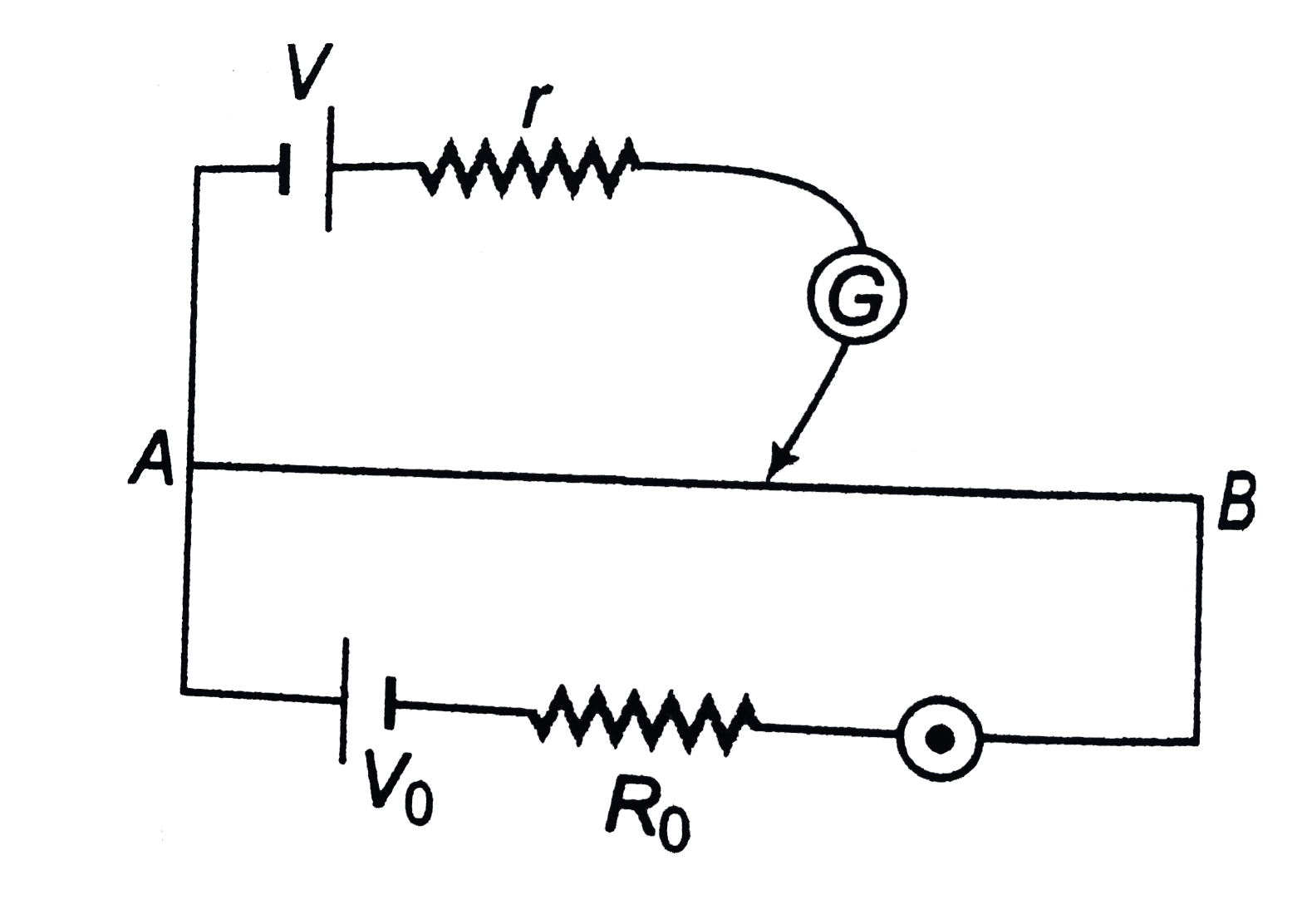If the current in a potentiometer increases, the position of the null point will
be obtained at a larger length than the previous one
be equal to the previous length
be obtained at a smaller length than the previous
none of these
The correct Answer is:C
To solve the question, we need to analyze how the current in a potentiometer affects the position of the null point. The null point is the point at which the potential difference across the potentiometer wire balances the potential difference of the source being measured.
1. Understanding the Potentiometer: A potentiometer is a device used to measure voltage by balancing it against a known voltage. The null point is reached when the potential difference across a certain length of wire equals the voltage of the source.
2. Potential Gradient: The potential gradient (E) in a potentiometer is defined as the potential drop per unit length of the wire. Mathematically, it can be expressed as:
E=VL
where V is the potential difference across the length L of the wire.
3. Ohm's Law: According to Ohm's law, the potential difference V across the wire can also be expressed as:
V=IR
where I is the current flowing through the wire and R is the resistance of the wire.
4. Combining the Equations: By substituting Ohm's law into the potential gradient equation, we get:
E=IRL
This shows that the potential gradient E is directly proportional to the current I and inversely proportional to the length L.
5. Effect of Increasing Current: If the current I increases, the potential gradient E also increases. Since E is inversely proportional to L, this means that for a higher potential gradient, the length L must decrease to maintain the balance.
6. Conclusion: Therefore, when the current in the potentiometer increases, the position of the null point will be at a smaller length than the previous one. Thus, the correct answer is that the null point is obtained at a smaller length than the previous one.
Final Answer:
The position of the null point will be at a smaller length than the previous one.
---
E=VL
where V is the potential difference across the length L of the wire.
V=IR
where I is the current flowing through the wire and R is the resistance of the wire.
E=IRL
This shows that the potential gradient E is directly proportional to the current I and inversely proportional to the length L.
The position of the null point will be at a smaller length than the previous one.
Topper's Solved these Questions
Similar Questions
An ideal cell having a steady emf of 2 volt is connected across the potentiometer wire of length 10m. The potentiometer wire is of magnesium and having resistance of 11.5Ω/m. An another cell gives a null point at 6.9m. If a resistance of 5Ω is put in series with potentiometer wire, find the new position of the null point.
View SolutionA cell in the secondary circuit gives null deflection for 2.5 m length of a potentiometer having 10m length of wire. If the length of the potentiometer wire is increased by 1m without changing the cell in the primary, the position of the null point wil be
View SolutionIn the meter bridge circuit shown, the null point is obtained at C(AC=x) on the wire AB. If the diameter of the wire AB is doubled, the position of the new null point C' will correspond to

View SolutionIn the given potentiometer arrangemeter the null point

View SolutionTwo students X and Y perform an experiment on potentiometer separating using the circuit diagram shown here. Keeping other things unchanged
(i) X increases the value of resistance R.
(ii) Y decreases the value of resistance S in the set up. How would these changes affect the position of the null point in each case and why?

View SolutionIf the length of potentiometer wire is increased, then the accuracy in the determination of null point
View SolutionIf potentiometer wire of length L and resistance 10Ω is connected in series with battery of emf 2.5V and a resistance in its primary circuit.The null point corresponding to a cell of a emf 1V is obtained at a distance L2.If the resistance in the primary circuit is doubled then the position of new null point will be
View SolutionTwo students ‘X’ and ‘Y’ perform an experiment on potentiometer separately using the circuit given: Keeping other parameters unchanged, how will the position of the null point be affected it
(i) X’ increases the value of resistance R in the set-up by keeping the key K1 closed and the key K2 open?
(ii) Y’ decreases the value of resistance S in the set-up, while the key K2 remain open and the key K1 closed? Justify.

View SolutionA potentiometer , with a wire of length 10 m, is connected to an accululator of steady voltage. A lenchlanche cell gives a null point at 7.5 m If the length of the potentiometer wire is increaseed by 1 m, find the new posistion of the balance point.
View SolutionThe figure

Shows the experimental set up of a meter bridge. The null point is found to be 60 cm away from the end A with X and Y in positions as shown. When a resistance of 15Ω is connected in series with Y, the null points is found to shift by 10 cm towards the end A of the wire. Find the position of the null point if resistance of 30Ω were connected in parallel with Y.
View Solution
